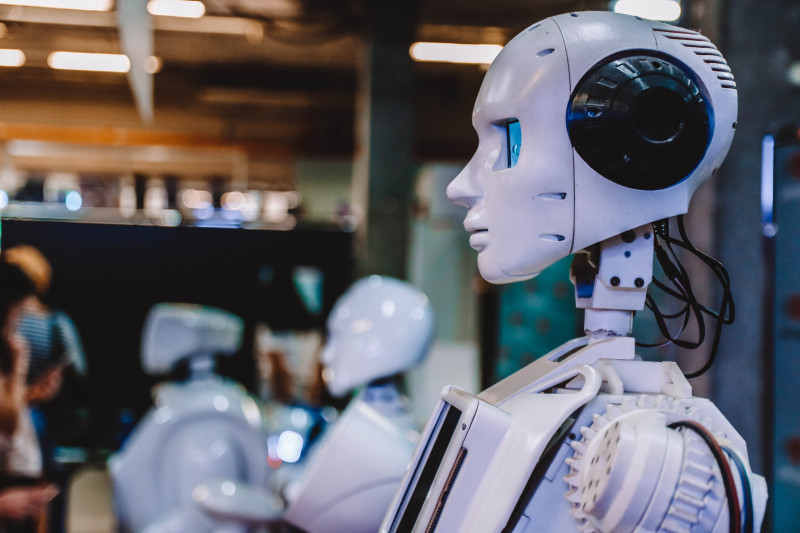In the News
Is a robotics revolution upon us?
The UK’s care sector is at a crossroads, grappling with a staffing crisis and rising demand, while emerging technologies offer potential solutions. Among these innovations are robots like “Pepper,” a humanoid robot capable of basic conversations, learning residents’ interests, and providing companionship.
Following a recent international trial, Pepper was already be deployed in some UK care homes after research found it improved mental health and reduced loneliness among residents before the pandemic. However, in the years since it appears as though little has happened on that front. Yet, following Elon Musk’s recent unveiling of the Optimus robot and with it the billionaire tycoon’s bold claim that within 20 years there will be more humanoid robots than people, we ask whether a robotics revolution lies on the horizon for social care?
Opportunities in robot-assisted care
A trial four years ago, led by Dr. Chris Papadopoulos from the University of Bedfordshire, demonstrated that robots could fill gaps during lonely periods in care homes for residents, especially at times that staff may be less available, like at night. Stretched staff resources mean that carers often lack time for one-on-one interaction, leaving residents isolated.
However, despite the promise, adoption remains limited. Production of Pepper paused in 2020 due to low demand, and fewer than one in 1,000 UK care homes uses robots like Pepper regularly. Cost is part of the reason. At £19,000 per robot, their cost exceeds the average annual salary of a care worker in the UK.
Nonetheless, a much greater one is the continued limited ability of these robots to adequately carry out the tasks expected of carers. Conversations lacked depth and personalisation and robots struggle to understand cultural nuances. In effect, and perhaps surprising to none, robots cannot perfectly emulate the humanity of conversation.
Even in Japan, often seen as a leader in care robotics, only ten per cent of care homes use any type of robot, including basic mobility aids. Moreover, public perception of robots in care homes varies, with some fearing they might replace human carers.
Experts, however, stress that robots are meant to complement, not replace, human care. Lisa Farrell of the National Robotarium advocates for robots to handle “dull, dirty, and dangerous” tasks, allowing human carers to focus on higher-quality, empathetic care.
It's these menial tasks which may prove more easily conducted by robots, rather than the humanity needed in most resident-facing care provision.
A way forward
The last Conservative government had made exploring how robots and AI can alleviate the UK’s social care crisis a stated priority in office. However, the new Labour government has so far been mostly silent on the matter. Health and Social Care Secretary Wes Streeting has prioritised his time since the election focusing on the state of the NHS and a wider conversation about how best to deliver results in social care has been kicked down the road.
As the care sector faces mounting pressures from staff shortages and financial constraints, robotics may provide a much-needed lifeline. But for this technology to succeed, investment in cost reduction and public trust will be essential. With the right strategy, the UK could harness robotics to transform care for its ageing population. The question is: can the care sector embrace the opportunity while addressing its challenges?
Interview: Tony Prescott, Professor of Cognitive Robotics at the University of Sheffield and Director of Sheffield Robotics
This month, we sit down with academic and author Tony Prescott, Professor of Cognitive Robotics at the University of Sheffield and Director of Sheffield Robotics. Together, we discuss the role of robotics in social care and how further developments can affect the sector in the future.

As we begin our discussion with Professor Prescott, we ask what robotics in social care should be primarily about and what function it should serve for carers and those in need of care. "The goal is to help people live in their own homes for longer because that benefits everybody", Tony says.
Central to this use of robotics is the continued growth of smart homes. The market for smart appliances for use in the home is expected to grow more than ten per cent a year until 2028. This is where he sees the greatest application for this technology in a care setting.
"It might be the case that more and more aspects of the home become automated". He adds, "rather than thinking of having mobile robots that are looking after you, it might be that aspects of the bathroom are automated in the way that they already are in places like Japan."
But, building on the smart home boom is easier said than done, he explains. "The challenge is retrofitting existing homes", he notes, stressing that "it's much easier to build these kinds of smart home systems into new accommodation." Given that the UK's housing stock is the oldest in Europe, with more than 40 per cent built before 1946, the scope of that technology is limited by Britain's existing housing system.
Balancing technology with human care
A central question regarding the role of robotics in care concerns the potential dangers of overreliance on machines and the risk of removing the essential human element that the sector is dependent on.
"There are two things involved here. One is physical support, and the other is social support ... physical support is less controversial, but it's also the hardest thing to do", Professor Prescott explains.
"Most existing robots are made of hard parts and could potentially do quite a lot of harm if they're not controlled very carefully."
A further possible complication for robotics is a privacy concern, which Professor Prescott notes contributes to the cybersecurity issues regarding these devices, stressing that "these systems need to be less hackable than they currently are."
However, "the personal data involved", he adds, "is no different from the cyber security issues around other devices that have cameras in the home, like phones and so on." What he regards as a greater question in care is the difficulty of programming answers to ethical questions.
"There are risks of coercion [for example] if somebody's not taking their medicine, how much of a role the robot should have." This is something mitigated in care by the essential part that human decision-making plays.
"Carers deal with these [ethical] issues all the time, of course, and again, we underestimate how important human intelligence is in making those sorts of calls."
Aiding workforce troubles
The issue most often on display in the ongoing crisis in social care is the shortage of carers. With a vacancy rate of more than eight per cent and 131,000 posts left unfilled in 2023/24, there are hopes that automation and AI could help reduce workforce pressures.
Prescott sees robotics helping with two of the biggest challenges in care: "the working conditions and the pay." He mentions that "physical injury is a huge problem," particularly back issues, in delivering care. "So, technology that can help with lifting and moving could [assist] there."
If you were to spend a fraction of one per cent of the social care budget on research, there [would be] rewards you could get back in reducing social care costs, which could be quite significant
Referring to the problem of low pay for the exhausting work involved in care, Tony believes that "one way to make it better paid is to make it more professional by bringing in some of these tools that could be part of the social care support package."
As such, he adds, "those training to be a social care worker, you would understand how to use these assistive systems effectively."
Role of policymakers and government
As we near the end of our discussion, we turn to the importance of state support in driving these developments and innovation. Prescott considers existing support minimal. "If you think about the budget spent on research in this area, it's pretty thin ... a very small amount."
This, to him, makes little sense because "if you look at the cost of caring for people in residential care and in hospital ... it's a big multiplier compared to the cost of keeping them in their own homes." So, if you can keep people in their own homes for longer, "they'll be happier about [it] and it will cost less. It's a win-win."
The importance of more significant support in this area is not just more cost-effective than providing hospital or residential care. Still, it can also prove to be a driver of economic activity. "The UK could take a lead here. Currently, Japan and the US are leading in this. One of our issues is we don't have UK robot manufacturers, but we could have [if] this is something we could invest in more."
"If you were to spend a fraction of one per cent of the social care budget on research, there [would be] rewards you could get back in reducing social care costs, which could be quite significant."
However, the state's role extends beyond financial support and encompasses regulation, too. On this, Prescott has already outlined his support for a 'right to human care' in a 2017 white paper that included a roadmap for the sector's future.
"[The] roadmap was quite ambitious ... but we're still in the first phase of that", he comments, but added that the importance of a legislated right to human care was essential to building support for wider use of robotics in social care. "One of the concerns about robotics is that it would leave people with less access to human carers, and that's one area where introducing legislation related to a right to human care can reassure people."
Reflecting on our discussion, Professor Prescott's vision for robotics in social care presents a nuanced path forward that balances the potential of automation with the essential role of human care. What remains to be seen is how well policymakers can address this sector's needs to deliver the robotics support that carers and those needing care are desperate for.



